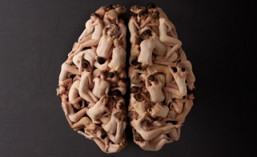Hershey’s chocolate has always been my favorite. It seems as though most of America agrees with me considering that Hershey accounts for 42.5% of the US market. Yet, inside almost every Hershey chocolate product is the bitter truth that the cocoa used to produce the chocolate may have been produced under harmful conditions, including forced labor, human trafficking, and abusive child labor.
Since at least 2001, the Hershey Company has been aware of the problems that exist at the start o its supply chain, yet it continues to source from this region without ensuring that the labor rights abuses do not occur in the production of the cocoa it uses (anyone else thinking of Apple right now?).
One potential solution that Hershey could utilize to combat these injustices present in their supply chain is to have a reputable, independent, third-party certification that will ensure that a process is in place to identify and remediate labor rights abuses. For cocoa, the strongest certification system currently available is Fair Trade. Unlike many of its competitors, Hershey’s has not embraced certification. In fact, only one of Hershey’s chocolate bars is Fair Trade Certified.
Moreover, much of Hershey’s cocoa is sourced from West Africa, a region plagued by forced labor, human trafficking and abusive child labor (I am talking about hundreds of thousands of children here). Hershey needs to develop a system to ensure that its cocoa purchases from this region are not tainted by labor rights abuses.
Check out this one-minute clip:
These are just a few of the many problems that I have seen thus far in my investigation of Hershey. I look forward to exploring the company more in upcoming Paper 2.


“….Hersey accounts for 42.5% of the US market.” – US market of what chocolate, food, desserts? other than that omission, very well written. Maybe you could take a look at what starbucks does (http://www.starbucks.com/responsibility/sourcing/coffee) and talk about how Hersey could enact a similar system for their products. Drawing parallels between the two and their ethics could easily give you 5 pgs.
I really like kyle’s idea of comparing it to another company. Also, I think that you could go into why Hershey child labor and oversea practices have not been addressed by the people, yet, Nike was forced to change their ways. How is this different than Nike’s sweatshops?
Since 2001?!? One angle to play off is how much Milton Hershey cared about children….
Equal Exchange (I think that is the name) is one group that does that kind of third party monitoring…
That’s a really good suggestion Jordi! I will definitely incorporate that idea into Paper 2.